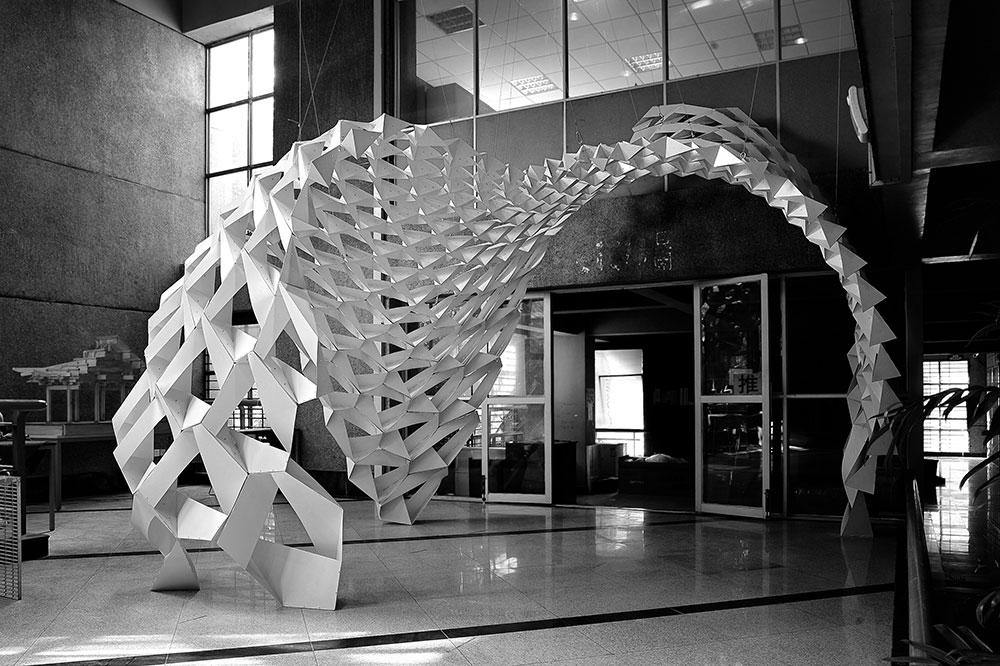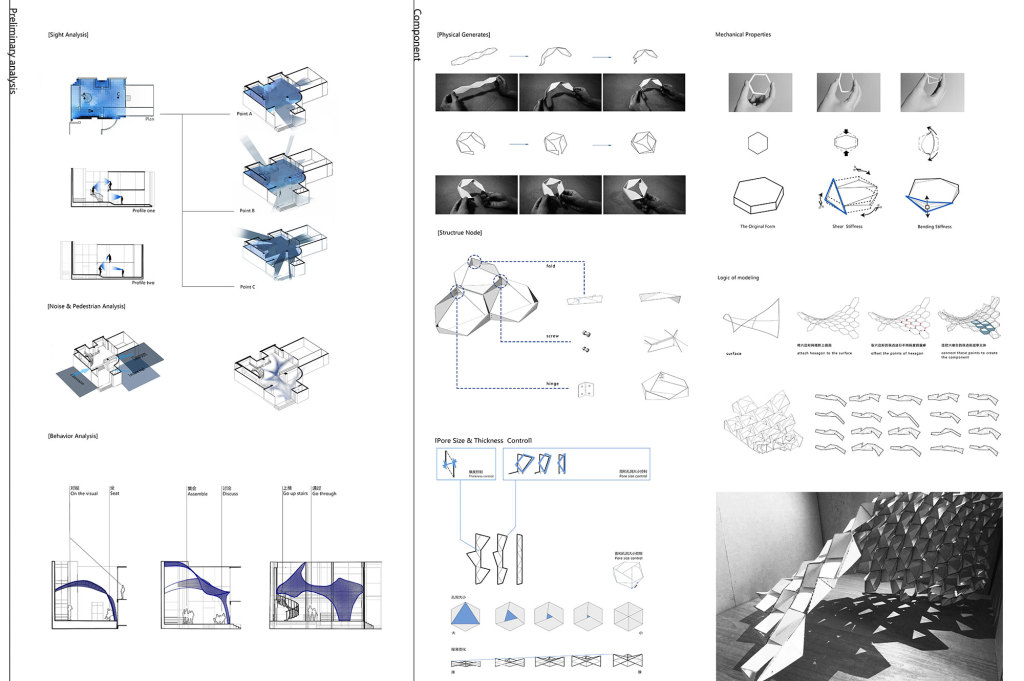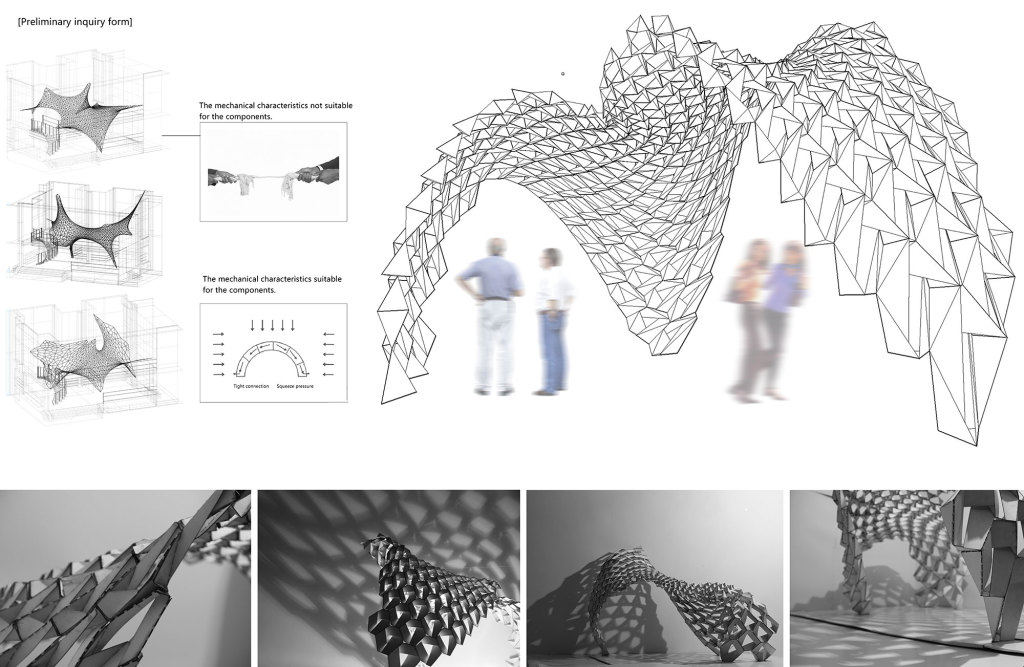The aim for this workshop is to design and fabricate a self-standing system which adapt to the environment to create a unique cafe space.

The concept is to reconsider the fundamental design elements such as light, ventilation, spatial direction, and enclosure, in order to test a system within those real constrains which is able to address questions on how cellular accumulation is responsible for spatial organization and structure self supporting. The form-finding process is generating 250 hexagon components which create a continuous curvy surface from ceiling to the ground. The components are continuously differentiated according to the programs, light directions and the view angles which completely reinventthe space.

Encoding Formations
——城市动态微组织
城市作为一种连续不断的流动体系,与广义自然界环境存在一定的差异。我们挑战城市作为一种固化物永久不变的概念,提出城市作为不断流动的体系,在回应诸多影响因素过程中生⻓、变化和演进。

此工作营的重点在于, 如何回应影响城市发展的动态因素,并在其影响下创造一个微观的,可建构,可测试的,局部的流动循环的组织体系。因此我们在现存的城市环境中编码动态交互的复杂场地环境,生成和控制动态模型,设计者可以通过各种经验和假设与参数产生互动。
我们的关注点在于让参与者的回馈和评价可以透过视觉表象去回应诸如生态、土地、水、矿物等各种问题,并且在一个具体的尺度中测试城市组织的自我受力平衡,自⽣⻓,分裂和聚集等行为方式,这样的导出我们称之为建筑。

为期十天的⼯作营, 将从“⾃⽣成——城市力场——形态——原型建构”的角度, 来重新理解与设计“城市的动态微组织”, 无论是车流、人流等具象流线, 还是信息,能源等抽象场地动态参数,都可以作为研究对象, 并通过对于形态与其背后生成原理的理解, 来提出“另一种可行性”。GH将作为coding平台, 学生在这一设计过程中, 通过设计一个回应场地条件的装置物, 对于“参数化设计”有初步的理解与体验。
Project Name: Hunan DAL+WAX Workshop 2014
Time: 2014.8-9
Tuotor: Hu Biao,Feng XU, Nikolaus Wabnitz
TA: Chen Tianyi, Yi Yunfu, Yu Jingjing, Qi Zhen, Zhao Zirong, Yang Shilun
Students: Luo Xiaoxiao, Wang Zitong, Zuo Kui, Li Jing, Hu Linkang, Gong Peixuan, Zhang Xiaoyu, Zhang Weijia, He Mengya, Zhou Kedi, Peng Kai, Shen Jie, Yan Yiting, Tang Guoxiong, Wen Kaixiang, Yang Guoyang, Wang Jingjing, Liu Hongliang, Wu Di, Houyi, Sun Yinan, Jing Yuanjie, Xu Jiayun

